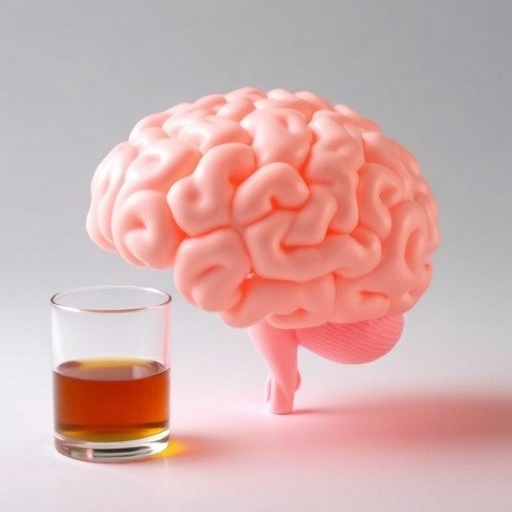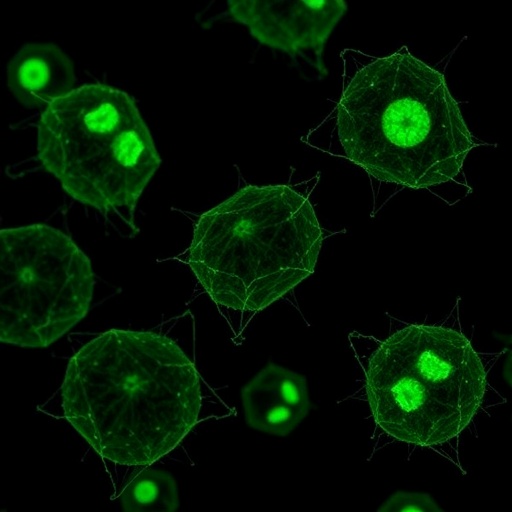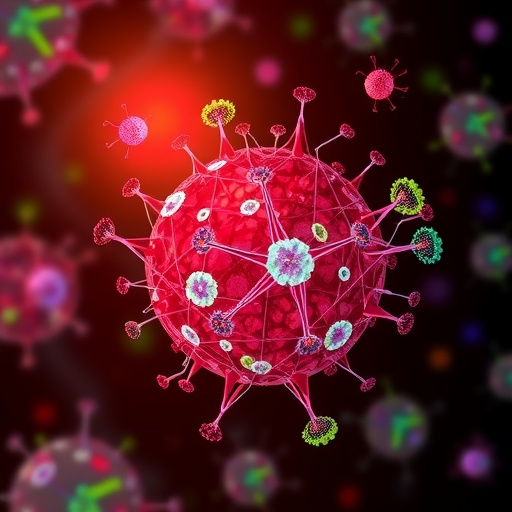In a groundbreaking study published in the International Journal of Mental Health and Addiction, researchers Liu and Hogarth unveil provocative evidence challenging a dominant paradigm in addiction science: the conceptualization of addiction as a compulsive brain disease. By examining the psychological impact of this model on individuals struggling with problematic alcohol use, their work suggests that adherence to brain disease explanations can unintentionally undermine the self-efficacy and motivation necessary for recovery. This revelation has profound implications not only for clinical treatment approaches but also for public health messaging and the broader social understanding of addiction.
For decades, the compulsive brain disease model has served as the cornerstone for addiction narratives within medical, neuroscientific, and policymaking communities. This model frames addiction primarily as a chronic brain disorder characterized by compulsive substance use driven by neurobiological alterations. Such a framing has had widespread ramifications, including the destigmatization of addiction and increased funding for neuroscience-based treatments. However, Liu and Hogarth’s new research urges a re-examination of this dominant conception by highlighting its potential psychological pitfalls when internalized by those it seeks to help.
Their study investigates how exposure to the brain disease model affects the confidence of problematic alcohol drinkers in their ability to reduce or control their addictive behavior. Confidence, or self-efficacy, is a critical psychological determinant in addiction recovery, influencing an individual’s perseverance and success in changing harmful habits. The researchers reasoned that while the brain disease narrative aims to externalize addiction as beyond personal flaw or moral weakness, it might inadvertently foster a sense of helplessness by depicting addiction as an immutable neurological issue.
Using robust experimental methodologies, Liu and Hogarth recruited participants who identified as problematic alcohol drinkers. These participants were exposed to either brain disease model narratives or alternative conceptualizations of addiction that emphasized personal agency and behavioral strategies. Subsequently, their confidence levels regarding controlling alcohol intake were evaluated using validated psychometric instruments. The findings were striking: individuals exposed to the compulsive brain disease explanation consistently demonstrated significantly lower confidence in their ability to reduce consumption compared to those who encountered other framing.
Neuroscientifically, the brain disease model often centers on the dysfunction of the brain’s reward circuitry, particularly involving dopamine signaling pathways in the mesolimbic system. Chronic substance use is known to hijack these circuits, leading to reinforcing cycles that promote compulsive behavior. This mechanistic insight has propelled biomedical approaches focusing on pharmacological interventions targeting these neural pathways. Nonetheless, Liu and Hogarth prudently advocate that an over-reliance on such deterministic neurobiological explanations can obscure the nuanced interplay of cognitive control, environmental factors, and psychological resilience involved in addiction.
Indeed, addiction is multifactorial, involving dynamic interactions between biology, psychology, and socio-environmental contexts. Effective recovery often depends on a person’s belief in their capacity to exert control and make meaningful behavioral adjustments. Therefore, a model that inadvertently diminishes such beliefs could paradoxically hinder, rather than facilitate, successful outcomes. The researchers suggest recalibrating addiction models so they incorporate neurobiological insights without discounting the vital role of personal agency.
Liu and Hogarth also explore the ethical and social consequences of disseminating the brain disease model as the singular explanatory narrative. While this model has helped reduce stigma by framing addiction as an illness rather than a moral failing, it may simultaneously perpetuate a sense of inevitability and chronicity that disempowers patients. The researchers contend that public health communications and treatment frameworks should strike a balance—acknowledging neurobiological contributions to addiction while emphasizing recovery potential through empowerment and skill development.
From a clinical perspective, the findings invite practitioners to revisit how they discuss addiction with patients. Therapeutic interventions that stress the compulsive brain disease model without integrating strategies to bolster self-efficacy might unwittingly diminish patient motivation. Integrating psychoeducation that highlights neuroplasticity—the brain’s capacity for change—and the effectiveness of behavioral techniques could restore hope and agency. The study underscores the importance of individualized treatment plans that consider not only biological factors but also psychological empowerment.
Furthermore, the implications resonate beyond clinical settings into the realm of addiction prevention and policy formation. Policymakers and advocacy groups often deploy brain disease narratives to secure funding and public support for treatment programs. Yet, if such narratives undermine the public’s belief in the possibility of change, they may counterintuitively impede prevention efforts by fostering a fatalistic attitude. The study advocates for nuanced messaging that simultaneously dignifies individuals’ struggles while promoting confidence in recovery techniques.
Another intriguing dimension of the research concerns how entrenched neuroscientific models influence societal perceptions. Media portrayals and educational materials frequently reiterate addiction as a brain disease, reinforcing deterministic attitudes. Liu and Hogarth’s data suggest a need for broader public discourse that integrates psychosocial explanations and celebrates stories of recovery grounded in personal commitment, thereby reshaping societal norms around addiction.
The study employs rigorous statistical analyses and well-validated self-report measures to ascertain confidence differentials between experimental groups, lending robustness to their conclusions. However, the researchers acknowledge limitations including the study’s focus on alcohol as a substance and the self-reported nature of behavioral intentions. They call for future investigations exploring diverse populations, substances, and real-world longitudinal outcomes to deepen understanding.
In light of these findings, addiction neuroscience might benefit from embracing a more integrative, biopsychosocial framework. Rather than positing a unidirectional causal relationship rooted exclusively in neuropathology, this approach recognizes reciprocal influences between brain changes, cognitive processes, behavior, and environment. Such a model not only enriches scientific comprehension but also underpins interventions fostering resilience and adaptive coping.
The work by Liu and Hogarth marks an important inflection point in addiction research, urging a critical reassessment of prevailing dogmas. By illuminating the unintended psychological consequences of the compulsive brain disease model, they reinvigorate debates about how best to conceptualize and communicate addiction. This dialogue is paramount for optimizing therapeutic strategies, informing policy, and ultimately supporting individuals on their path to recovery.
As our understanding of addiction evolves, bridging the gap between neuroscience and lived experience remains pivotal. Promoting narratives that empower rather than incapacitate those grappling with addiction enhances the likelihood of engagement and long-term behavioral change. Liu and Hogarth’s research thus serves as a clarion call for nuance, balance, and compassion in advancing addiction science.
The study also primes the scientific community to critically scrutinize the broader impacts of biomedical models beyond purely clinical endpoints. Psychological phenomena such as optimism, perceived control, and motivation are integral to health outcomes and warrant equal emphasis in addiction frameworks. Future research expanding this integrative lens promises to yield novel insights and more effective intervention paradigms.
In summary, while the compulsive brain disease model has undeniably advanced the field, Liu and Hogarth’s findings suggest it is not without drawbacks. Addiction is inherently complex, and models capturing this complexity must safeguard the psychological resources essential for change. By promoting a synergistic view that honors brain biology alongside personal agency, the addiction field can foster improved outcomes and enriched societal understanding.
Subject of Research: Psychological impact of the compulsive brain disease model of addiction on confidence to reduce addictive behavior in problematic alcohol drinkers.
Article Title: The Compulsive Brain Disease Model of Addiction Lowers Problematic Alcohol Drinkers’ Confidence to Reduce their Addictive Behaviour.
Article References:
Liu, Y., Hogarth, L. The Compulsive Brain Disease Model of Addiction Lowers Problematic Alcohol Drinkers’ Confidence to Reduce their Addictive Behaviour.
Int J Ment Health Addiction (2025). https://doi.org/10.1007/s11469-025-01544-9
Image Credits: AI Generated
DOI: 10.1007/s11469-025-01544-9
Keywords: Addiction, Brain Disease Model, Alcohol Use Disorder, Self-Efficacy, Recovery, Neurobiology, Motivation, Behavioral Change, Public Health Communication
Tags: addiction brain disease modelchronic brain disorder and addictionimplications for addiction treatment approachesmotivations for overcoming addictionneuroscience-based treatments for addictionproblematic alcohol use recoverypsychological impact of addiction narrativespublic health messaging on addictionre-examining addiction conceptualizationrecovery confidence in alcohol useself-efficacy in addiction recoverystigma reduction in addiction





